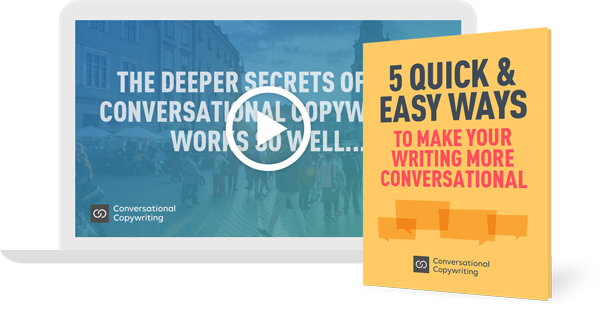
I hate reading articles and posts written by experts.
Well… maybe that’s a bit of an exaggeration.
But I do hate reading articles where it feels like the writer is looking down his nose at me.
Writers like that remind me of the kind of teacher who barely even acknowledges students in his classroom. He just talks and instructs… expecting his students to remain quiet, and soak up his infinite wisdom.
We’re exposed to this kind of writing all the time.
It’s there in every letter we receive from any level of government.
It’s often found in academic settings, whether in that arrogant teacher’s classes or in the textbooks and papers he writes.
And we also see it in marketing writing.
That same sense of superiority. That expectation that the reader will just pay attention and listen.
The assumption that the writer knows more. And knows best.
This kind of writing creates barriers…
If a teacher or online instructor is arrogant and appears to have no respect for me as his student, I have a choice. I can stay or leave. I may stay, because I paid to take that course. But I won’t like it.
But… if I encounter that same attitude when exposed to marketing materials, I’ll leave in a heartbeat.
Because I absolutely don’t NEED to read your marketing stuff.
Chances are, I don’t even WANT to read it.
So it had better be well written. And it had better be respectful.
The trouble is, a lot of marketing writing is anything but respectful.
A lot of it is pushy, and even manipulative.
Instead of reducing the distance between the writer and the reader, it increases it.
The harder the writer pushes, the further the audience moves back.
The conversational approach dissolves arrogance and distance.
Conversations are different. They’re cooperative.
We talk, but we also listen.
Taking turns, going back and forth, implies a certain respect for the other person.
Yes, you want to say your part… but then you’ll pause and let the other person take her turn. And so on. Back and forth.
Of course, when you’re writing copy – an email or a sales page, for example – you’re not holding a conversation. There is no back and forth.
But you can take on a conversational mindset.
You can write your copy AS IF you were in conversation.
In fact, you can use a few open-ended questions as a way to invite your reader to pause and think about a possible answer or two.
Imagine yourself in conversation.
Use the kind of everyday language you would use in a conversation.
And treat your reader with the kind of respect you would show if she were there in person, right in front of you, and you were having a conversation with her.
Like the headline say, respect lies at the heart of all conversational writing.
NOTE: You can find out more about my course on conversational copywriting here…
